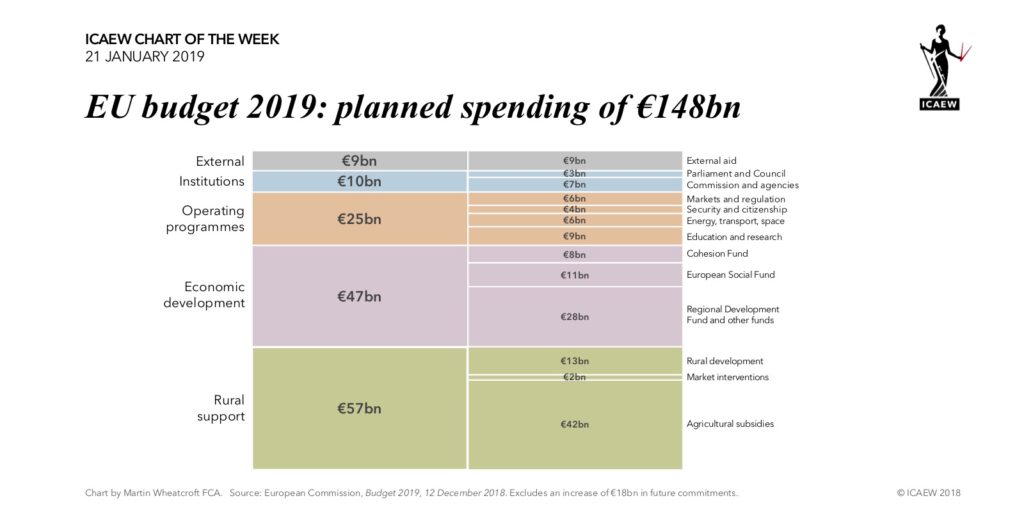
The #ICAEWchartoftheweek this time is on the subject of the EU’s 2019 budget of €148bn. This is in the order of £130bn at current exchange rates, equivalent to €24 per month for each of the 514m people in the EU.
Of this, €10bn is for EU institutions, with €25bn to be incurred on its main programmes. The big numbers are €57bn for agriculture and rural communities, and €47bn for economic development. A further €9bn is planned in international aid outside the EU.
Not shown in the chart is an increase in future commitments of €18bn – amounts authorised but not yet paid out, such as multi-year research or development grants.
The UK’s share for 2019 is £15bn, but with £6bn expected to come back, the net cost should be £9bn (£11 per person per month), just over 1% of planned UK government spending in 2019-20 of £842bn.
What will happen if the UK’s agreed transition period contributions of £16bn in 2019 and 2020 and post-transition payments of £21bn are not paid in full? Although the UK is expected to prepay around £3bn before the end of March (not included in the £16bn), that will only last so long if it leaves without a deal.
One certainty is that the finance team at the European Commission will need a full range of scenario planning skills to deal with all the possibilities.